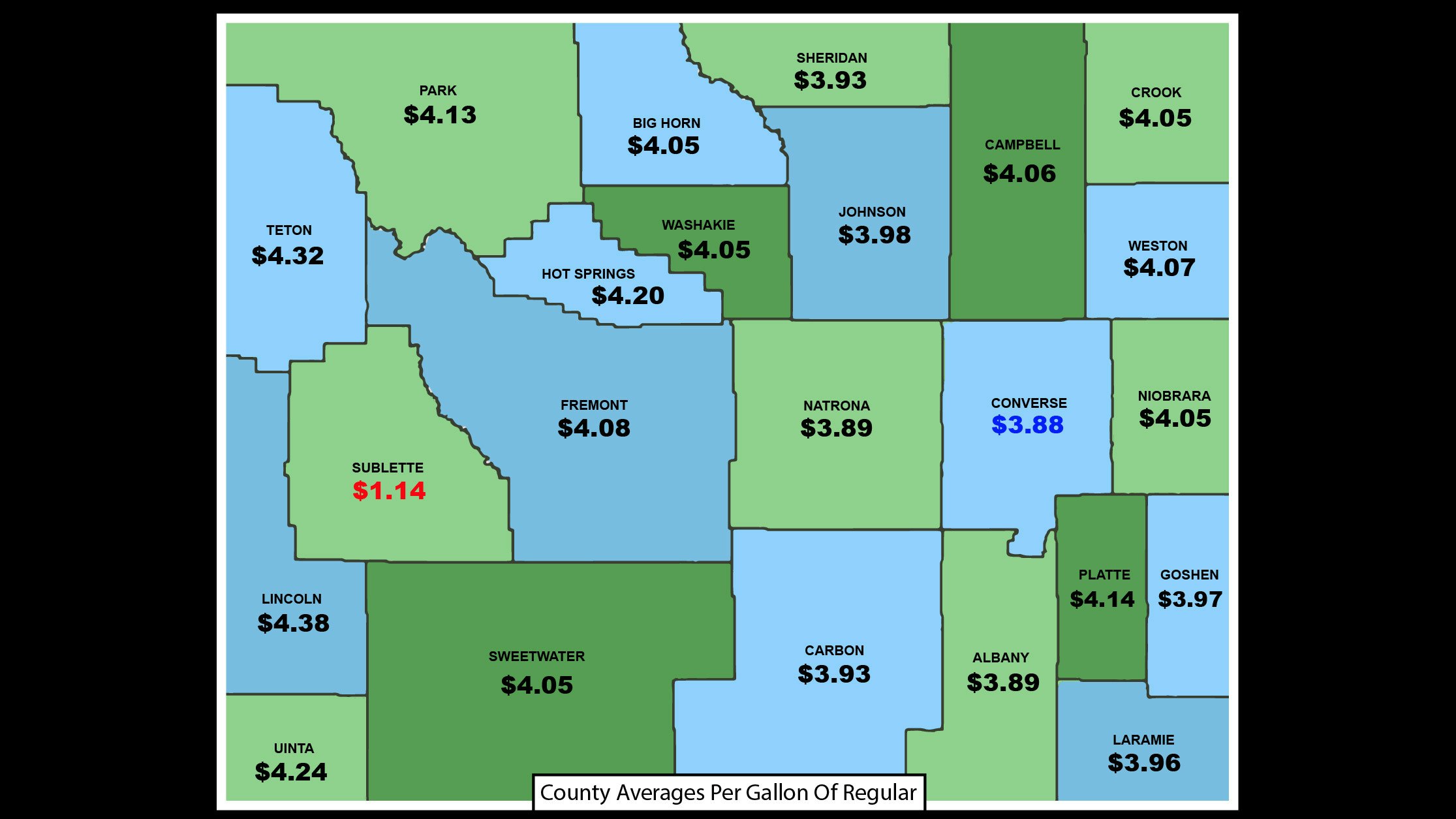Wyoming’s average gasoline price increased by 2 cents over the previous 24 hours to $4.07 on Friday.
The website GasBuddy.com, which tracks national gas prices, reported Wyoming’s average gas price is up 7.5 cents per gallon of regular unleaded over one week ago and up $1.19 per gallon from one year ago.
Wyoming’s average price for gasoline remained below the national average of $4.288 for a gallon of regular.
* The average price per gallon of regular in each Wyoming county:
Albany $3.89; Big Horn $4.05; Campbell $4.06; Carbon $3.93; Converse $3.88; Crook $4.05; Fremont $4.08; Goshen $3.97; Hot Springs $4.20; Johnson $3.98; Laramie $3.96; Lincoln $4.38; Natrona $3.89; Niobrara $4.05; Park $4.13; Platte, $4.14; Sheridan $3.93; Sublette $4.14; Sweetwater $4.05; Teton $4.32; Uinta $4.24; Washakie $4.05; and Weston $4.07
The biggest movers were Jackson, down 10 cents, and Kemmerer, up 21 cents per gallon.
* The lowest price per gallon, reported in major Wyoming cities:
Basin $4.13; Buffalo $3.95; Casper $3.89; Cheyenne $3.85; Cody $4.10; Douglas $3.78; Evanston $4.19; Gillette $3.89; Jackson $4.28; Kemmerer $4.29; Laramie $3.79; Lusk $3.79; New Castle $3.93; Pinedale $4.09 Rawlins $3.92; Riverton $3.99; Rock Springs $3.96; Sheridan $3.89; Sundance $4.05; Thermopolis $4.17; Wheatland $3.69; Worland $4.08.
Laramie was the biggest mover today with a drop of 31 cents per gallon of regular.
The lowest reported average price continues to be $3.69, in Wheatland, while the highest was in Kemmerer, at $4.49 per gallon of regular gas.
Tim’s Observations:
Need something to watch besides NetFlix? With the war in Ukraine, energy news is changing almost by the hour.
While visiting Brussels today, President Joe Biden struck a deal with the European Union, to supply them with 15 billion cubic meters of LNG, liquified natural gas. The move is meant to choke off more of Vladimir Putin’s sources of funding aggression in Ukraine. This comes on the heels of the U.S. banning the importation of Russian oil and LNG.
The US currently has a 300-year supply of LNG at our current rate of consumption.
So now we just go get the gas out of the ground and send it over, right? It’s not as easy as that. Ramping up production takes time. Also, there’s our neighbor to the north, Canada to fold into the mix. Canada is currently the largest supplier of LNG to the US. Most of that comes by pipeline.
Yesterday I talked about pipelines. It seems we will be needing more of them to keep up with our current needs, plus the LNG promised the EU.
How this new agreement with the EU will affect the price of energy in the U.S. remains to be seen, but if there’s any two countries that can get the job done, it’s the U.S. and Canada.
As always though, it depends on how much red tape they have to cut through in order to deliver on the promise.
*Note: Prices in this report are for reference only. They are gathered the evening before posting, and may not reflect prices that have changed since last posted.





